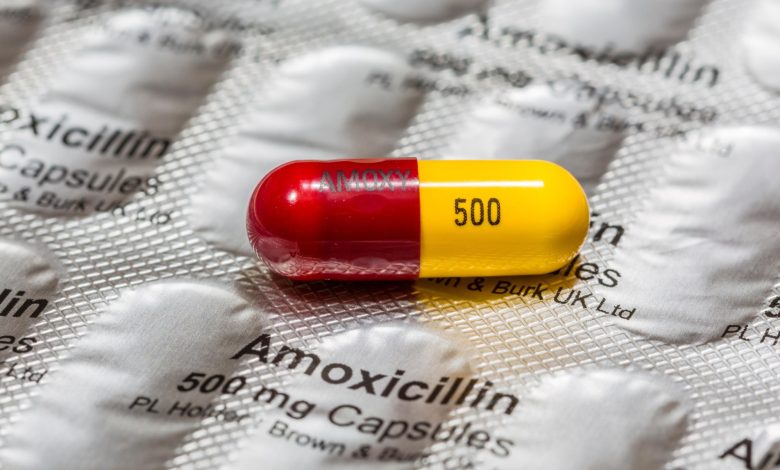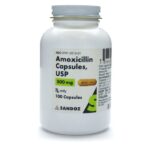10 Important Warnings For Amoxicillin Containing Medications

Drugs come with warnings because they can have potential risks and side effects. The warnings provide information about the possible adverse effects that may occur when taking the medication. The purpose of these warnings is to inform patients and healthcare providers about the potential risks associated with the medication and to help them make informed decisions about its use.
Drug warnings may include information about possible allergic reactions, drug interactions, side effects, and precautions that need to be taken while using the medication. These warnings are based on clinical trials and post-market surveillance, which provide data about the safety and efficacy of the drug.
The warnings also help to ensure that the medication is used correctly and safely and that patients are aware of any potential risks associated with its use. This is particularly important for drugs that have a high potential for abuse or addiction, or that can cause serious side effects if not used properly.
What is Amoxicillin?
Amoxicillin is a type of antibiotic that belongs to the penicillin family. It is commonly used to treat a variety of bacterial infections, such as pneumonia, ear infections, urinary tract infections, and skin infections. Amoxicillin works by preventing the growth of bacteria by interfering with their cell wall formation.
The history of amoxicillin dates back to the 1950s when British scientists discovered the antibiotic properties of penicillin. Later on, they modified the structure of penicillin to produce a more effective drug, called amoxicillin. It was first marketed in 1972 under the trade name Amoxil.
Amoxicillin quickly became a popular antibiotic due to its effectiveness, low cost, and low toxicity. Today, it is available in various forms, including tablets, capsules, and oral suspension. It is also used in combination with other antibiotics to treat more severe bacterial infections.
Amoxicillin is now considered one of the most commonly prescribed antibiotics globally and has been included in the World Health Organization’s list of essential medicines since 1987.
As with all medications, amoxicillin comes with several warnings and precautions that should be considered before use. Here are 10 important warnings regarding amoxicillin:
1. Allergic reactions: Amoxicillin is a penicillin-type antibiotic, and people who are allergic to penicillin may also be allergic to amoxicillin. Severe allergic reactions can occur in some people, including anaphylaxis, a life-threatening allergic reaction. If you have a known allergy to penicillin, it is important to inform your healthcare provider before taking amoxicillin.
2. Diarrhea: Amoxicillin can cause diarrhea, which can range from mild to severe. Diarrhea is a common side effect of antibiotics and can be a sign of a more serious infection, such as Clostridium difficile (C. difficile) infection. If you experience severe or persistent diarrhea while taking amoxicillin, you should contact your healthcare provider.
3. Interactions with other medications: Amoxicillin can interact with other medications, including over-the-counter medications and herbal supplements. It is important to inform your healthcare provider of all medications and supplements you are taking before starting amoxicillin.
4. Drug-resistant bacteria: Overuse and misuse of antibiotics can lead to the development of drug-resistant bacteria, which are bacteria that are no longer susceptible to the effects of antibiotics. This can make infections more difficult to treat in the future.
5. Pregnancy and breastfeeding: Amoxicillin is generally considered safe for use during pregnancy and breastfeeding, but it is important to discuss any potential risks with your healthcare provider before taking the medication.
6. Liver and kidney function: Amoxicillin is metabolized by the liver and excreted by the kidneys. People with impaired liver or kidney function may require dosage adjustments or may not be able to take the medication.
7. Oral contraceptives: Amoxicillin can decrease the effectiveness of oral contraceptives, such as birth control pills. Women taking oral contraceptives should use an additional form of contraception, such as condoms, while taking amoxicillin.
8. Immune system suppression: Amoxicillin can suppress the immune system, which can make you more susceptible to infections. If you have a weakened immune system, you should inform your healthcare provider before taking amoxicillin.
9. Sun sensitivity: Amoxicillin can make you more sensitive to the sun, which can increase your risk of sunburn or skin rash. It is important to avoid prolonged exposure to the sun while taking amoxicillin and to use sunscreen and protective clothing.
10. Resistance testing: If you have recurrent or persistent infections, your healthcare provider may recommend resistance testing to determine if the bacteria causing your infection are resistant to amoxicillin or other antibiotics. This can help guide the selection of the most appropriate treatment for your infection.
Overall, amoxicillin is a safe and effective antibiotic when used appropriately. However, it is important to consider these warnings and precautions before taking the medication. If you have any concerns or questions, you should discuss them with your healthcare provider.
How to Safely Take Amoxicillin
Here are some tips on how to safely take amoxicillin:
1. Follow the instructions given by your doctor or pharmacist carefully. Take the medication at the same time each day to maintain a consistent level of the medication in your system.
2. Take the full course of the medication, even if you start feeling better before you finish the prescribed amount. This will help prevent the development of antibiotic resistance.
3. Amoxicillin should be taken with food to avoid stomach upset. If you experience any gastrointestinal discomfort, taking it with a meal or snack can help.
4. Do not stop taking the medication or change the dose without consulting your doctor. Doing so could lead to treatment failure, antibiotic resistance, or other complications.
5. If you miss a dose, take it as soon as possible. If it is close to the time for your next dose, skip the missed dose and continue with your regular dosing schedule.
6. Store amoxicillin at room temperature, away from moisture, heat, and direct light.
7. Inform your doctor or pharmacist of any allergies, medical conditions, or medications you are taking before starting amoxicillin. Certain medications or health conditions may interact with amoxicillin or affect its effectiveness.
Remember to always consult with a medical professional before taking any medication, including amoxicillin.





